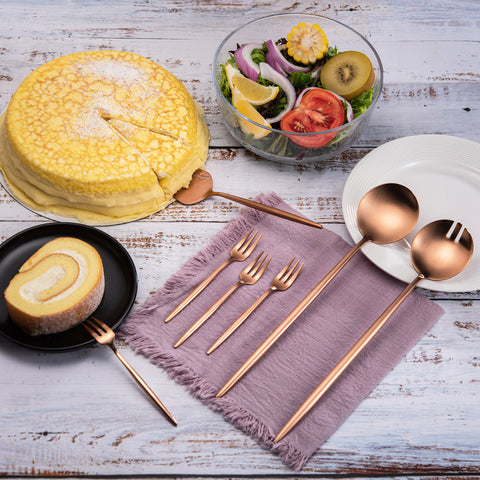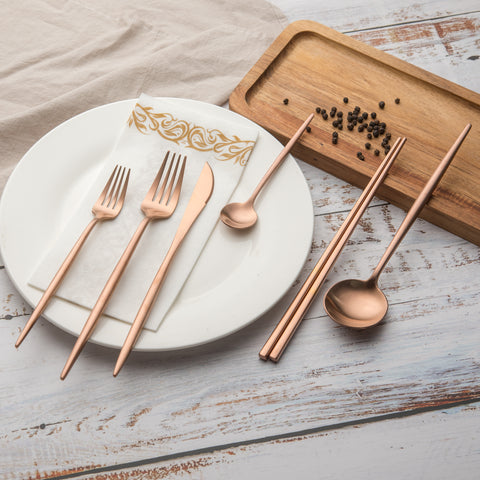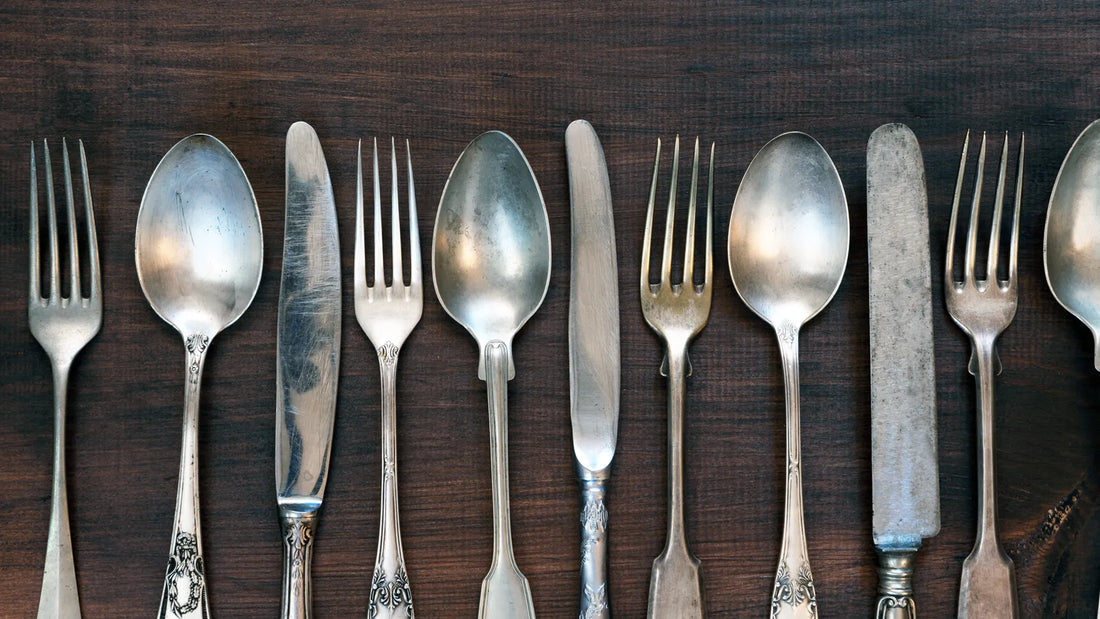Do you ever find yourself contemplating the lifespan of your silverware while enjoying a hearty meal? If so, you're not alone! Many people overlook the importance of knowing when it's time for their beloved flatware to retire.
But fear not – in this article, we will embark on a journey into the mysterious realm of cutlery expiration dates. From faded patterns to loose handles, we'll explore all the indicators that reveal whether your knives and forks are still up for the job or have reached their final swan song. Join us for culinary enlightenment and discover when to replace flatware!
When to replace everyday use flatware
Knowing when to replace everyday use flatware is crucial for maintaining the functionality and safety of your dining utensils. Here are some key factors to consider:
1. Visible Damage:
Flatware can become damaged through regular use. Look for bent tines on forks, broken knife blades, or deep scratches on the utensil's surface. These types of damage can affect the flatware's functionality and present a safety risk. For example, a bent fork tine can make it challenging to pick up food, and a broken knife blade can be dangerous to use. Any flatware pieces that exhibit such damage must be replaced to ensure safe and effective dining.
2. Rust or Corrosion:
Rust and corrosion can occur on flatware, mainly if it's made of materials that are not highly resistant to these issues. It's a red flag when you notice rust or corrosion on your flatware, especially on the parts that come into direct contact with food. These issues can compromise the safety of your dining experience, as rust and corrosion can transfer harmful substances to your food. In such cases, it's best to replace the affected pieces.
3. Frequent Discoloration:
Over time, flatware can develop discoloration due to various factors, including exposure to acidic foods, improper cleaning, or just regular wear and tear. Discoloration can not only make your flatware look less appealing but may also be an indicator of a surface that's deteriorating. If cleaning and maintenance efforts do not restore your flatware's appearance, it's a sign that they may have reached the end of their useful life.
4. Loose Handles:
Flatware with loose or wobbly handles can be frustrating and, more importantly, pose a safety risk. Handles not securely attached to the utensil can break off during use, potentially causing injury. This is particularly common with flatware with glued or riveted handles, as these connections can weaken over time. When you notice that the handles on your flatware have become unstable, it's a strong indication that it's time to replace those pieces to ensure safe and comfortable dining.
5. Excessive Wear:
Over time, the metal in flatware can wear down, especially on parts that come into direct contact with food, such as the fork tines, knife edges, and spoon bowls. Excessive wear can make the utensils less effective in their primary functions, like cutting or picking up food. When you notice that the metal has thinned to the point where it affects the usability of the flatware, it's a strong indicator that it's time for replacement.
6. Mismatched Sets:
If you've lost multiple pieces from your flatware set or your collection has become significantly mismatched, it may be time to replace the entire set. Having mismatched flatware can be visually unappealing and lead to an inconsistent dining experience. Replacing the whole set ensures a cohesive and functional dining setup, making it easier to set the table and enjoy meals without constantly searching for matching pieces.
--> Visit KiiZYs' Amazon page for matching Serveware and Cutlery Set
7. Health Concerns:
In specific situations, health concerns may warrant more frequent flatware replacement. For instance, during a pandemic or if you live in a shared housing environment (such as a dormitory or communal kitchen), you may want to replace your flatware more frequently to maintain better sanitation. Frequent replacement can help minimize the spread.

Factors That Can Shorten Flatware Lifespan
Several factors can shorten the lifespan of flatware, leading to the need for replacement. These include:
- Frequency of Use: Everyday use can lead to quicker wear and tear.
- Dishwasher Cleaning: Harsh detergents and high heat in dishwashers can damage flatware.
- Acidic Foods: Regular exposure to acidic foods can cause corrosion and discoloration.
- Improper Stacking: Stacking flatware haphazardly can lead to dings and scratches.
- Low-Quality Materials: Flatware made from cheaper materials may have a shorter lifespan.
- Frequent Dropping: Accidental drops can result in bends, breaks, or damage.
- Chemical Exposure: Contact with chemicals or strong cleaning agents can harm flatware.
- Storage Conditions: Improper storage in humid or corrosive environments can expedite deterioration.

Practical Tips on Choosing New Flatware
When selecting new flatware, consider these practical tips to make a wise choice:
Material:
Choose flatware made from durable materials such as 18/10 stainless steel, which is resistant to rust and corrosion. Sterling silver and gold-plated options are elegant but require more maintenance.
Design:
Opt for a design that suits your style and complements your table settings. Classic, contemporary, and ornate designs are all available, so choose what resonates with you.
Weight:
Consider the weight of the flatware. Heavier pieces often feel more substantial and of higher quality.
Pieces:
Determine the number of place settings you need, considering the size of your family or the frequency of your entertaining.
Finish:
Choose between matte, polished, or brushed finishes to achieve the desired look for your table.
Handles:
Ergonomically designed handles provide comfort during use. Test the grip and balance in your hand.
Maintenance:
Consider how easy the flatware is to clean. Dishwasher-safe options are convenient for everyday use.
Budget:
Set a budget, but be willing to invest in quality if you plan to use the flatware frequently for special occasions.

Final Thoughts
In conclusion, knowing when to replace flatware is crucial to maintaining a healthy and aesthetic dining experience. Look for signs of wear and tear, like rusting, bending, or discoloration; these indicate it's time for new flatware. Remember, quality matters as much as aesthetics, so constantly invest in high-quality flatware from trusted brands.
Maintaining your cutlery not only elevates the overall appearance of your table setting but also ensures the safety and well-being of you and your family. Keep your dining set updated and refreshing by replacing old flatware when necessary.
FAQs
Q: Can the discoloration on my flatware be cleaned, or must it be replaced?
A: Mild discoloration can sometimes be removed with proper cleaning methods. However, if the discoloration persists after cleaning, it might be a sign that the flatware needs replacing.
Q: Does frequent use of dishwashers affect the lifespan of my flatware?
A: Yes, frequently washing your flatware in a dishwasher could potentially shorten its lifespan due to harsh detergents and high temperatures causing damage over time.
->> Visit KiiZYs' Amazon store. All our Matching Utensils Set are Lead free, Cadnium free and Phthalates free.

